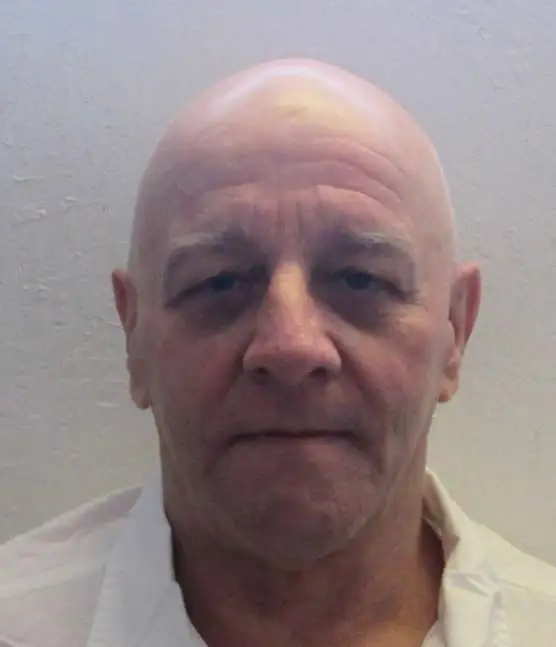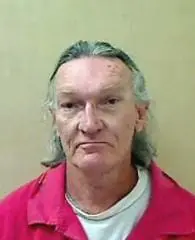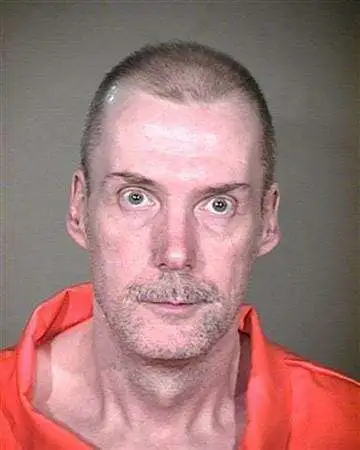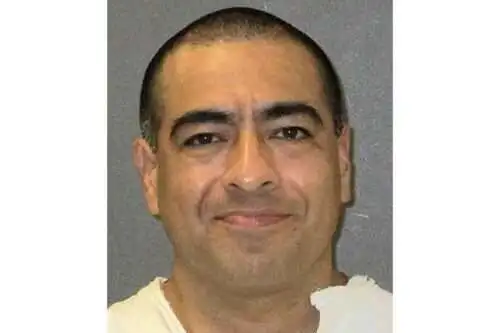Charles Clark Murders 2 In Alabama
Charles Clark was sentenced to death by the State of Alabama for a double murder committed during a robbery
According to court documents Charles Clark was robbing a gas station and in the process would stab two people to death
Charles Clark would be arrested, convicted and sentenced to death
Charles Clark Photos
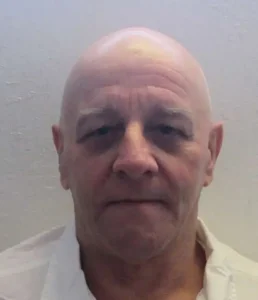
Charles Clark FAQ
Where Is Charles Clark Now
Charles Clark is incarcerated at Holman Prison
Charles Clark Case
The evidence adduced at trial indicated the following. On the evening of February 13, 1998, Charles Clark went to the apartment of his girlfriend, Rhonda Kenny, in Pensacola, Florida. Kenny testified that Clark had driven to her apartment that evening at approximately 8:00 p.m. in his stepfather’s pickup truck. When Clark arrived, Kenny said, he was “high” on crack cocaine. Kenny testified that, at that time, she and Charles Clark had known each other for approximately a year and that they had often smoked crack cocaine together. According to Kenny, both she and Charles Clark were employed and they both used their income to purchase crack cocaine. In addition, Kenny said, Clark often pawned his property and property belonging to his parents to obtain money to purchase crack cocaine. Approximately one week before February 13, 1998, Kenny said, Clark received an income-tax refund of $2,800; Kenny stated that Clark used the entire amount to purchase crack cocaine. At some point during the evening of February 13, 1998, Kenny said, Charles Clark left her apartment and then later returned. Kenny testified that when Clark returned he was walking and he told her that the truck had run out of gas and that he had walked back to her apartment. Kenny stated that she and Clark stayed up all night smoking crack cocaine and that CharlesClark was “high” when he left her apartment at approximately 5:00 a.m. on February 14, 1998, driving her Toyota Celica automobile. Kenny testified that she did not think that Charles Clark was able to drive safely, but that she gave him the keys to her car anyway. Just before Clark left her apartment, Kenny said, he borrowed $40 from her brother-in-law, which, she said, Charles Clark promised to pay back the next day. Despite having borrowed $40, Clark told Kenny that he was going to drive to Seminole to borrow more money. Kenny testified that she did not see Clark carrying a knife that morning and that she had never known Clark to carry a knife.
James E. Iles testified that on February 14, 1998, at approximately 7:20 a.m., he was driving on Fort Morgan Road in Baldwin County on his way to go fishing when he passed a gasoline station/convenience store owned and operated by William Fuller Ewing. Iles stated that he noticed two people outside the store; he said that one person was on his hands and knees in the parking lot and the other was walking toward a car parked at the gasoline pumps. As he passed the store, Iles said, he saw one of the men get into the car near the pumps and drive away in the same direction Iles was traveling. Iles testified that he decided to turn around and go back to the store to see what was happening. When he turned around and started back toward the store, Iles passed the car that had been parked near the gas pumps. At that point, Iles said, he changed his mind about going back to the store, and, instead decided to follow the car that had been at the store in order to identify it. Iles turned around again and followed the car. Iles got the license tag number of the car and then pulled into another gas station/convenience store and telephoned emergency 911.
At approximately 7:45 a.m., Huey Mack, Jr., chief investigator for the Baldwin County Sheriff’s Department, received a dispatch to go to Ewing’s store on Fort Morgan Road. When he arrived at the scene, Investigator Mack said, he saw Ewing’s body on the ground in the doorway to the store; he stated that Ewing was positioned so that his feet were toward the gas pumps in front of the store and his head and chest were on the threshold of the door. Ewing had been stabbed numerous times. Over $600 in cash was found in Ewing’s billfold in his pants pocket. Investigator Mack testified that Ewing’s body was covered in blood and that blood on the ground extended approximately six feet outside the store and six feet inside the store. In addition, several droplets of blood were found on the check-out counter and on the floor behind the check-out counter. Investigator Mack also discovered a pack of cigarettes with a clump of what appeared to be bloody hair around it and a baseball-style cap on the floor in the entrance to the attendant’s area behind the check-out counter. A stick was also found standing on end against the wall in the corner behind the counter. The cash register was on the floor in front of the check-out counter and there were loose coins on the floor and on the counter. The cash-register tape indicated that the last transaction rung up on the register was the previous evening, February 13, 1998, at 8:52 p.m. One of the gasoline pumps in front of the store was on and the hose and nozzle of the pump were lying on the ground; that same pump indicated that approximately $14 in gas had been pumped from it. In addition, a shoe print was discovered near the gas pumps.
Dr. Leroy Riddick, a medical examiner with the Alabama Department of Forensic Sciences who was accepted by the trial court as an expert in forensic pathology, performed the autopsy on Ewing. Dr. Riddick testified that Ewing suffered 15 stab wounds, 17 superficial cuts, and several scrapes on his body, including on his back, his chest, his face, his arms, and his hands. Dr. Riddick stated that the wounds were most likely caused by a knife and that, because of the presence and amount of blood in each wound, in Dr. Riddick’s opinion, Ewing was alive when each wound had been inflicted; however, Dr. Riddick said that he could not determine the order in which the wounds had been inflicted. According to Dr. Riddick, the two stab wounds in the back were relatively deep wounds-they, in fact, struck bone-and “would take some degree of force.” (R. 800.) In addition, Dr. Riddick stated that one of the stab wounds to the chest punctured Ewing’s heart. Dr. Riddick testified that the wound to the heart would have been fatal within a few minutes. Dr. Riddick also stated that there were a few wounds on Ewing’s hands and arms which he described as defensive wounds; however, Dr. Riddick stated that the lack of a significant number of defensive wounds on Ewing’s hands and arms indicated that Ewing and the perpetrator were in very close proximity-i.e., closer than two feet-struggling at the time of the stabbing.
William Bentley Cowan, a corporal with the Gulf Shores Police Department, testified that on the morning of February 14, 1998, he was informed by the police-department dispatcher about a possible assault or homicide at a gas station on Fort Morgan Road. Cpl. Cowan then drove to Fort Morgan Road in an attempt to find the gas station. He stopped at the first gas station he saw-Mo’s Landing, which is approximately 8 to 10 miles away from Ewing’s store. At Mo’s Landing, Cpl. Cowan was informed that a silver Toyota Celica automobile that had just driven past Mo’s Landing was involved in the incident at Ewing’s store. Cpl. Cowan reported the automobile and then drove east on Fort Morgan Road in an attempt to find it. Cpl. Cowan testified that, as he was looking for the car, he heard over the radio that another officer with the Gulf Shores Police Department, Justin Clopton, had stopped a vehicle matching the description. Cpl. Cowan then went to assist Officer Clopton.
Both Cpl. Cowan and Officer Clopton identified Clark as the driver of the silver Toyota Celica automobile that Officer Clopton had stopped. Cpl. Cowan testified that Charles Clark had a “fairly large amount” of blood on his hands, his neck, and his clothes, particularly his jeans, but that he did not see any cuts or wounds on Clark. (R. 777.) In addition, Clark had a bald spot near the crown of his head where it appeared that his hair had been pulled out. Officer Clopton stated that when he asked Clark where the blood on his clothes had come from, Clark said that he had gotten “in a scuffle ․ with a guy down the road” and that he had gotten a “scratch on his neck.” (R. 896-97.) Cpl. Cowan stated that he saw a ski mask and a copy of the Mobile Register newspaper on the front passenger’s side floorboard of the car and a “large wad of cash” stuck between the two front seats. (R. 781.) The ski mask was on top of the newspaper. No drugs or drug paraphernalia were found in the vehicle. Cpl. Cowan and Officer Clopton decided to detain Clark and they placed him in handcuffs and seated him in the back of Officer Clopton’s patrol car. Both Cpl. Cowan and Officer Clopton testified that Clark responded to their directions and that he did not appear intoxicated. Officer Clopton also testified that, when he initially stopped Clark, Charles Clark appeared nervous.
Michael Cook, who was an investigator with the Baldwin County Sheriff’s Department in 1998, testified that on the morning of February 14, 1998, he was dispatched to Ewing’s store on Fort Morgan Road. On his way to the store, Investigator Cook was told that a vehicle had been stopped in connection with the crime at the store, and he was instructed to go to where the vehicle was stopped rather than to the store. Investigator Cook said that when he arrived at the scene Charles Clark was in the back of Officer Clopton’s patrol car. When he spoke with Clark, Investigator Cook said, Clark appeared “a little nervous,” but he did not seem intoxicated. (R. 910.) Investigator Cook asked Charles Clark if he could look in the vehicle and Clark told him that he could. Investigator Cook collected from the vehicle the money that was stuck between the two front seats, which totaled $397, and the newspaper and mask that were on the floorboard of the front passenger’s side. The date on the newspaper was February 14, 1998. In addition, Investigator Charles Cook took numerous photographs of the vehicle. One photograph, depicting the gas gauge in the dashboard of the car, showed that the Toyota had a full tank of gas. Another photograph showed that the door to the gas tank was open.
Charles Clark was arrested and transported to the Gulf Shores Police Department. At the department, Clark was interviewed by Investigator Cook and Sergeant John Stewart, also with the Baldwin County Sheriff’s Department. Sgt. Stewart read Charles Clark his Miranda2 rights; Clark indicated that he understood those rights and then signed a waiver-of-rights form. Sgt. Stewart and Investigator Cook both testified that Charles Clark was never threatened and that he was never promised any reward for making a statement. In addition, both Sgt. Stewart and Investigator Cook testified that Charles Clark did not appear to be under the influence of alcohol or narcotics at the time of the interview. Sgt. Stewart and Investigator Cook initially spoke with Charles Clark for approximately 20 minutes; during that interview, Clark explained his version of what had happened at Ewing’s store. In that initial statement, Charles Clark indicated that he had wiped the blade of the knife he had used to stab Ewing on his pants. After the initial statement, Sgt. Stewart turned on a tape recorder, reread Charles Clark his Miranda rights, and asked Charles Clark to again explain his version of events. Clark then gave a tape-recorded statement.
In the tape-recorded statement, Charles Clark admitted to stabbing Ewing, but he maintained that he did so only because Ewing had attacked him. He also admitted to taking a money bag from Ewing, but he claimed that he had no intent to rob Ewing until after he had stabbed him. Clark stated that the day before the crime, February 13, 1998, he had spent the entire day in Pensacola, Florida, smoking crack cocaine. According to Clark, he had pawned items belonging to his stepfather and had also borrowed money to pay for the crack cocaine he had purchased and smoked that day. Sometime during the evening of February 13, 1998, Clark said, his stepfather’s truck had run out of gas and he had walked to Rhonda Kenny’s apartment. Early the next morning, February 14, 1998, he had asked Kenny if he could borrow her car to drive to Seminole and she had agreed. Charles Clark said that he left Kenny’s apartment about 4:45 a.m. and went to a house he owned in Seminole to pick up his mail. After he got his mail, Clark said, he began driving back to Pensacola. However, Clark stated that on the way, he decided to stop by a beach house owned by his mother and stepfather on Fort Morgan Road. When he got ready to leave the beach house, Clark said, he noticed that the car was low on gas, so he stopped at the nearest gas station-Ewing’s store. Clark said that he had known Ewing for about 10 years.
Clark stated that when he first arrived, Ewing was not yet at the store. Ewing arrived approximately 15 minutes later, Clark said, and he asked Ewing to turn on the gas pumps. According to Clark, after the pumps were turned on, he put the nozzle in his car and set it on automatic; he then went inside the store and spoke with Ewing. Clark said that he asked Ewing for a pack of cigarettes and that, as soon as Ewing got them and laid them on the counter, the gas pump stopped. Ewing told Clark that he owed approximately $14 for the gas. Clark stated that he paid for the gas and cigarettes and received change. It was at that point, Clark said, that he saw Ewing’s money bag lying on the open drawer of the cash register. Clark said that he stayed and chatted with Ewing for approximately five minutes. When he turned to leave the store, Clark said, Ewing asked him if he was going to pay for his gas. According to Clark, he told Ewing that he had already paid for the gas, but Ewing said that he was going to call the sheriff’s department and came around from behind the counter and approached him.
Charles Clark said that he and Ewing then “tussled, back and forth a little bit, just pushing and shoving.” At that point, Clark said, Ewing walked back behind the counter, got a stick, and came to the front of the counter. According to Clark, he had a hunting-type knife in the pocket of the jacket he was wearing 3 and, when Ewing drew the stick back as if to hit him (but before he actually did hit him), he pulled out the knife and “started sticking him and cutting.” They then fell to the floor struggling, and Clark continued to stab Ewing. When this initial struggle stopped, Clark said, Ewing went behind the counter and leaned over. Clark stated that he thought Ewing was getting a gun, so he jumped on Ewing and began stabbing him again. He and Ewing continued to struggle and they again ended up in front of the counter. Eventually, Clark said, he was able to get away from Ewing and leave the store; however, Ewing followed him outside and another struggle ensued. Clark stated that this struggle lasted for “just a minute” because he stabbed Ewing one or two more times and Ewing then fell to the ground and quit fighting him. Clark said that he then walked to his car to leave, but that, when he was almost to his car, he remembered the money bag he had seen lying on the drawer of the cash register and he decided he wanted the money so he could buy more crack cocaine; he then went back into the store and got the money bag. According to Clark, when he went back into the store to get the money bag, Ewing was on the ground about halfway between the gas pumps and the front door to the store. When he came out of the store with the money bag, Clark said, Ewing was still in the same area, but he was attempting to get up and make it to the door of the store. Clark walked past Ewing on his way to the car, took the gas nozzle out of the car, laid it on the ground, and got in the car to leave. At that point, Clark said, he saw that Ewing was near the front door of the store on one knee struggling to get off the ground to open the door.
Charles Clark stated that he then left the scene. As he was driving away, Clark said, he threw the knife he had used to stab Ewing out of the car window. Shortly after disposing of the knife, he saw a garbage can on the side of the road, and he stopped and threw away the money bag. A short time after he got rid of the money bag, Clark said, he was stopped by a Gulf Shores police officer.
Throughout his statement, Charles Clark maintained that he had had no intent to rob Ewing, that he merely remembered the money bag after the stabbing, and that he had decided he could use the money to buy more crack cocaine. He also maintained that the only reason he had stabbed Ewing the first time was because he thought Ewing was going to hit him with the stick and that he had jumped on Ewing and had stabbed him again when Ewing was behind the counter only because he thought Ewing was getting a gun. Clark stated that during the struggle with Ewing, Ewing had hit him several times and had also pulled his hair.
https://caselaw.findlaw.com/al-court-of-criminal-appeals/1095429.html

